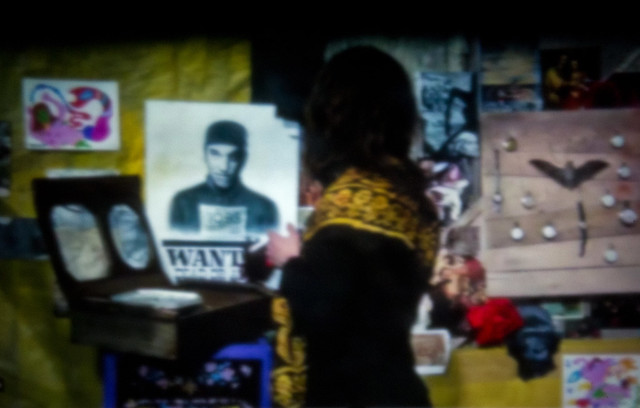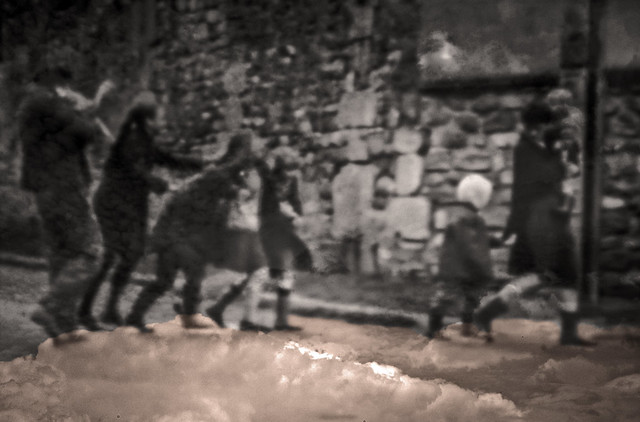Frühlingsblumen – Spring Flowers – Pinhole Photography
Frühlingsblumen mit der Lochkamera
Der Frühling ist wieder da. Da ist es nicht einfach die Blütenvielfalt zu ignorieren. Bei Sonnenschein funktioniert die Pinhole Fotografie auch wieder, ohne Stativ, mit dem Lochkameraobjektiv an der Fujifilm FX Kamera. Der lichtstarke Sensor liefert auch bei schlechtem Licht gute Aufnahmen. Auf “Velvia Fim” eingestellt sorgt die Kamera für die kräftigen Farben.
Kamera: Fujifilm Finepix X-T20
Objektiv: Skink Pinhole Pancake mit Lochblende 0.2
Brennweite: 24mm
ISO: 8000
Film Simulation: Fuji Velvia
Linkes Wahlrad: [S]
Belichtungszeit: zwischen 1/15 Sek. und 1/125 Sek.
Spring flowers with the pinhole camera
Spring time is back and there it is not easy to ignore the abundance of flowers. With sunshine, again it is possible to do pinhole photos with the pinhole lens on a Fujifilm FX camera without a tripod. Even with not very much light the strong sensor delivers good pictures. The “Velvia Film” setting in the camera creates the strong colors.
Camera: Fujifilm Finepix X-T20
Lens: Skink Pinhole Pancake mit Lochblende 0.2
Focal Length: 24mm
ISO: 8000
Film Simulation: Fuji Velvia
Left Dial on Camera: [S]
Exposure time: between 1/15 Sec. and 1/125 Sec.





ja, das ist Schnittlauch

Our bestseller, the Skink Pinhole Pancake for Fujifilm Finepix FX:
Fujifilm FX
Fujifilm Finepix FX, X-H1, T-100, X-T3, X-T2, X-T20, X-T1 IR, X-T10, X-T1 GS, X-M1, X-E3, X-E2S, X-E2, X-E1, X-A10, X-A5, X-A4,X-A3, X-A2, X-A1, X-Pro 2, X-Pro 1, X-Pro 100


sicher bezahlen / secure payment:
Banküberweisung / Bank Transfer (IBAN / BIC / SWIFT)
Deutsche Bank Privat- und Geschaeftskunden AG

Lochblenden – In folgenden Größen Mikrometer (µm) lieferbar:
Pinhole Apertures – available sizes in micron (µm ):
Lochblenden nach Brennweite:
Apertures according to focal lengths:
60mm 65mm 70mm 80mm 90mm 100mm 105mm 110mm 125mm 135mm 140mm 150mm 160mm 180mm 200mm 210mm 240mm 260mm 280mm 300mm 360mm 410mm
| Die gewählte Brennweite (Abstand zwischen Film und Lochblende in mm) ist maßgebend für den resultierenden Bildwinkel. Je kürzer die Brennweite, desto weiter der Blickwinkel. Anhand der Tabelle können Sie vergleichen, welchen Blickwinkel Sie mit gleicher Brennweite auf den verschiedenen Filmformaten erhalten. Die Größe der Lochblende richtet sich immer nach der Brennweite. Das gleiche gilt für die Berechnung der Zonenplatten und Photonensiebe. Lochblenden in einer bestimmten Größe lassen sich, ohne nennenswerte Veränderung der Bildqualität, über einen gewissen Brennweitenbereich einsetzen. Mit den Größen 0.3, 0.4, 0.5 und 0.6mm können fast alle Bereiche zwischen Weitwinkel und Tele erfassen abgedeckt werden. Zonenplatten und Photonensiebe hingegen, sollten exakt auf die jeweilige Brennweite abgestimmt sein. |
| The selected focal length (distance between sensor / film and pinhole aperture in mm) determines the resulting angle of view. The shorter the focal length, the wider the angle of view. With the above table you can compare how wide a view you can obtain with with varying distances and film formats. The size of the pinhole aperture is always linked to the focal length. The same applies to the design of zone plates and zone sieves. Pinhole apertures in a given size can be used over a range of focal lengths without degration of image quality. With sizes 0.3, 0.4, 0.5 and 0.6 all ranges between wide-angle and tele photography can be covered. Zone plates and zone sieves however, should always match their calculated focal length as close as possible. |
Skink Pinhole – flickr
Skink Pinhole – flickr























